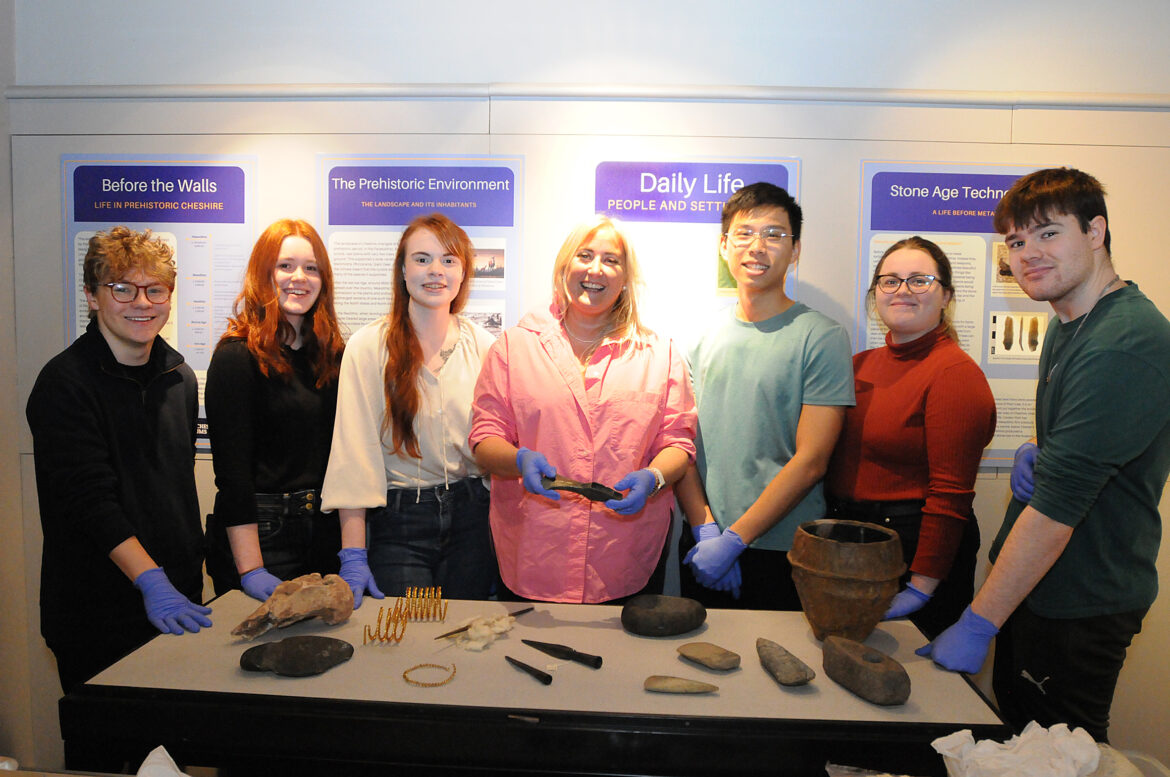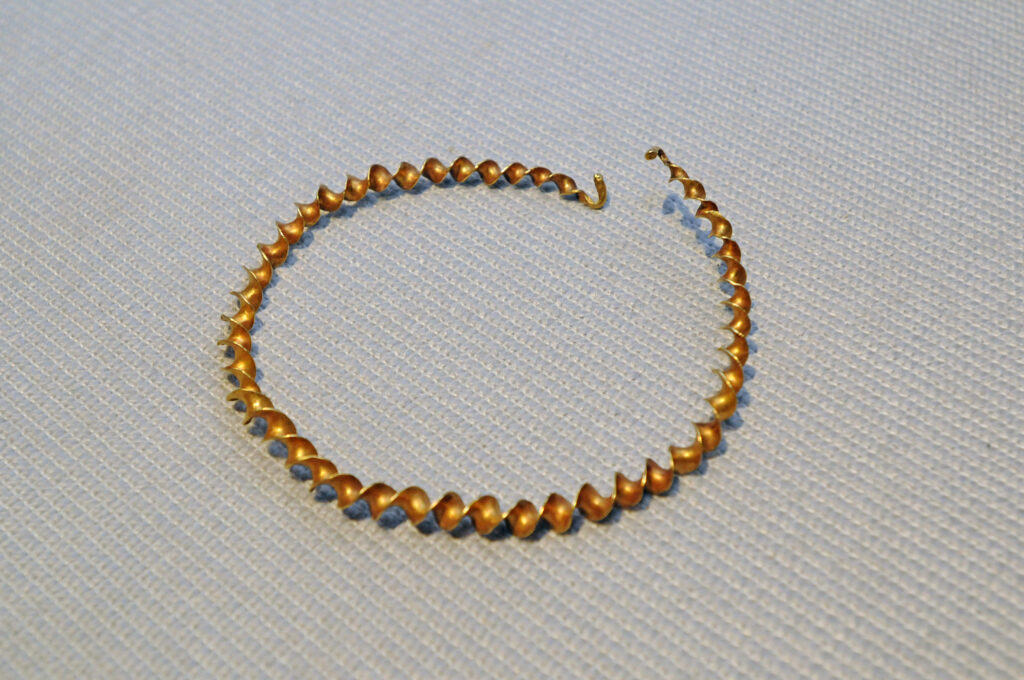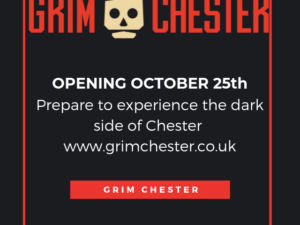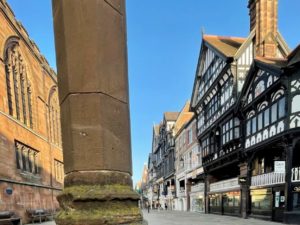
University students will bring prehistoric Chester to life with an exhibition at Grosvenor Museum featuring rare tools, jewellery
From 6 March – 30 April, an exhibition called ‘Before the Walls – Life in Prehistoric Chester’, researched by third-year archaeological students at the University of Chester, will be on display at Chester’s Grosvenor Museum. This free exhibition will showcase the Museum’s significant prehistory collection through interesting interpretation boards summarising what the artefacts and wider archaeological evidence can tell us about life in prehistoric Chester and the surrounding area, including a highly worked flint found near Chester’s amphitheatre. Highlights on display include an extraordinary Neolithic Jadeite axe-head and gold torc (necklace). For information go to www.westcheshiremuseums.co.uk
Dr Caroline Pudney, Senior Lecturer in Archaeology, University of Chester, said: “Prehistory relates to the period from the end of the Ice Age to the Roman invasion – a huge span of time. Until you see the bones, it is hard to imagine that at one time Cheshire was home to woolly mammoths and aurochs (huge ancestors of modern cattle, often featured in cave paintings). This was the time of our Palaeolithic hunter-gatherer ancestors. It is extraordinary to think that anything survives from this time and yet close to Chester’s amphitheatre, a highly worked flint – the all-purpose Swiss Army penknife of its day – would have had multiple uses, including stripping animal hides.
“Having an opportunity to delve into the Grosvenor Museum’s collection, as well as loans from the Poulton Research Project*, has been an invaluable experience and privilege for the University’s archaeology students.”
The Neolithic Jadeite axe-head (c. 4000 to c. 2,500 BCE) was found in Hunter Street, Chester. Jade axes were quarried from blue-green stone only found high up in the Swiss Alps. Once polished, a Jadeite axe-head has a luminescent surface and these desirable and precious objects are known to have had such symbolic significance that wherever they are found (usually in a funeral setting) they appear to show no signs of use.
As well as Bronze Age flint arrowheads and bronze axes, the exhibition also showcases a small gold ‘ribbon’ torc. Gold was an immensely revered and precious metal in the Bronze Age and the fusion of technical skill and design could only have been the work of a skilled and trusted craftsperson.
Councillor Louise Gittins, Leader of Cheshire West and Chester Council said: “I am immensely pleased that the Grosvenor’s collection is being brought alive by these dedicated archaeology students with the support of the University and Grosvenor’s enthusiastic staff. Discoveries and research throw new light on the Museum’s collection and we welcome our close, on-going relationship with the University of Chester and its students as part of bringing these treasures to light.”







